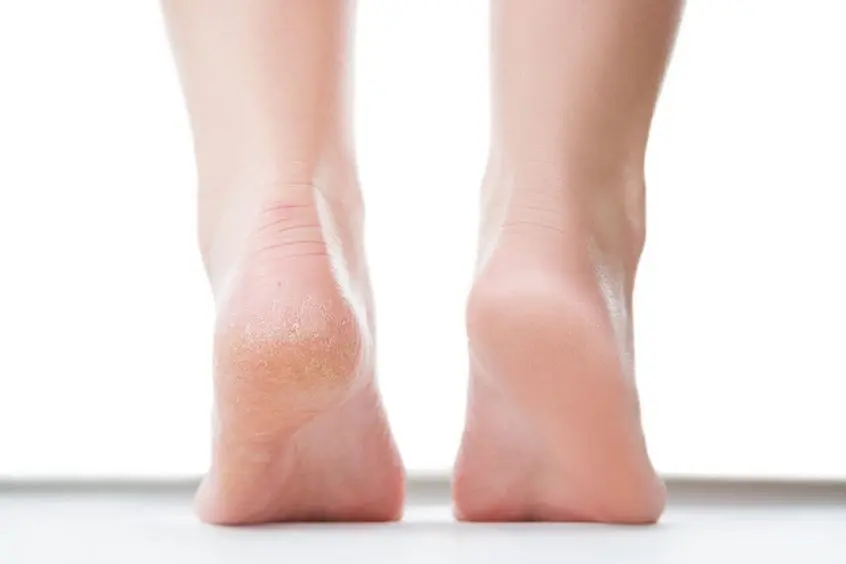
EUP
There are plenty of articles describing home remedies that anyone can try out for their cracked feet – pumice stone treatment, lotions, and soaking them in water every morning and night. And while these home remedies might work great for mild conditions of cracked heels, or cracked heels that are just beginning to develop, they do nothing for cracked heels that have settled in for years.
In cases like these, you need to ditch the home pumice stone and call in the professional hands of a podiatrist to remove the cracks on your heels.
So how exactly do podiatrists go about removing cracked heels? The podiatry experience begins with an assessment; the podiatrist discusses the cracked heel issue with the patient, getting a clear idea of what might be causing the development of cracked heels. This helps them recommend the best aftercare and advice after the treatment to keep the feet healthy and allow for optimal recovery.
The treatment process itself lasts anywhere from 30 minutes to two hours, depending on the severity of the cracked heels. It involves the use of a metal scalpel to pick away the hard skin, followed by a sander to scrape away the rest.
The patient experience of removing cracked heels with a podiatrist begins with an initial assessment. The podiatrist will seek to understand exactly what conditions in your lifestyle contribute most to the development of cracked heels. This will help them give you the best aftercare treatment and advice beyond the cracked heel removal, preventing the reoccurring development of cracks on your heels.
Once assessment is done, you will be asked to sit or lie down in the treatment room. Depending on the clinic, the patient may also be asked to wear a cotton face mouth mask as well as covering over their clothes. Shoes and socks should be removed, and the podiatrist will use a metal scalpel to begin removing the initial layers of hard or dead skin from the bottom of the feet.
This is known as debridement, or the cutting away of thick and hard skin from the feet. It is crucial that you do not attempt any kind of debridement at home with home tools like blades or scissors, as you risk removing healthy skin, which may lead to major pain and infection.
Contact us now to discuss your foot and ankle health needs.
The debridement process may take anywhere from 15 minutes to an hour, depending on how severe the condition of hard skin may be on your feet. After this is done, the podiatrist may also proceed to use a sander for your dry cracks. The sander is gently applied against the dry skin, scraping away at the dry cracks and turning it into dust (which is why patients are recommended to wear mouth masks).
After an hour or an hour and a half into the treatment, patients may start to feel sensation again in their feet. No pain should be felt during the initial debridement and scraping of dry skin because the dry skin doesn’t have any nerves or pain receptors; it is literally dead skin.
For some podiatry clinics, the heel fissures removal process will end here, ending with a discussion on daily aftercare tips and recommendations on types of lotions the patient should apply. However, certain podiatrists may offer additional services after the removal treatment to best care for the dry skin condition.
Patients may be treated to an additional massage and exfoliating scrub, followed by a hot wax treatment that stimulates healing and blood flow to the feet. This treatment involves wrapping the cracks in special warm wax that maximizes the daily healing process of the skin.
If the patient’s skin cracks are also discovered to be infected after the debridement and scraping, the podiatrist will be required to dress the wound to begin the healing process of the infection. For additional dry cracked healing support, strapping and padding or the application of skin adhesive will be done to the feet to maximize healing. A final assessment will also be done on the patient’s footwear and whether or not they require orthotics.
When choosing the type of topical treatment for your prevention or aftercare management of cracked heels, it’s important you understand the different types of products and what podiatrists would typically recommend.
The daily application of topical treatments is known as emollient therapy, and there are different formulations available (with some products mixing these formulations) for different conditions. These may include:
- Urea-based: Most lotions and products on the market are made up of 10% urea cream. They are available for general sale in brands like Aquacare and Nutraplus; another good option is Calmurid, which is 10% urea cream and 5% lactic acid. Generally, the more severe your cracked heels / heel fissures, the more urea content you want for your topical treatment. Neat Feet Heel Balm contains 26% urea cream; Elactol contains 25% urea cream. Products made up of 25% urea cream or greater are reported to significantly help dryness, pain, and overall foot appearance.
- Alpha-hydroxy acids: These acids are typically found in natural products like sugar cane, fruit, and milk, and they are made up of lactic, citric, and glycolic acids. General sale products such as QV Feet Heel Balm contain alpha-hydroxy acids, and they specialize in reducing keratinization (the hardening of the foot skin) and skin exfoliation.
- Salicylic acid-based: These products are best used for skin exfoliation, as they reduce pain, fissures, and hyperkeratosis (skin hardening). Most cracked heel products contain salicylic acid mixed with urea cream, and salicylic should be used for thick, dry cracked skin. If the skin is broken, salicylic products may cause a painful stinging sensation when applied.
- Saccharide isomerate: Another term for pentavitin, saccharide isomerate is an important ingredient in certain topical products such as Ellgy Heel Balm. Simply put, pentavitin acts as a moisturizing agent as it can be difficult to wash off, leading to effective moisturization.
Essex Union Podiatry has treated countless patients suffering mild to severe cracked heels, as well as a range of other foot and ankle conditions. Most issues of the foot can be handled with a simple procedure with a trained and trusted podiatrist, so why not get your cracked dry feet back to their best condition with a simple appointment?
Call Essex Union Podiatry at 973-376-8210 today, or schedule an appointment through our website.
Learn more: Do Podiatrists Cut Toenails?
Our advanced podiatry treatments can help relieve your foot and ankle issues.

